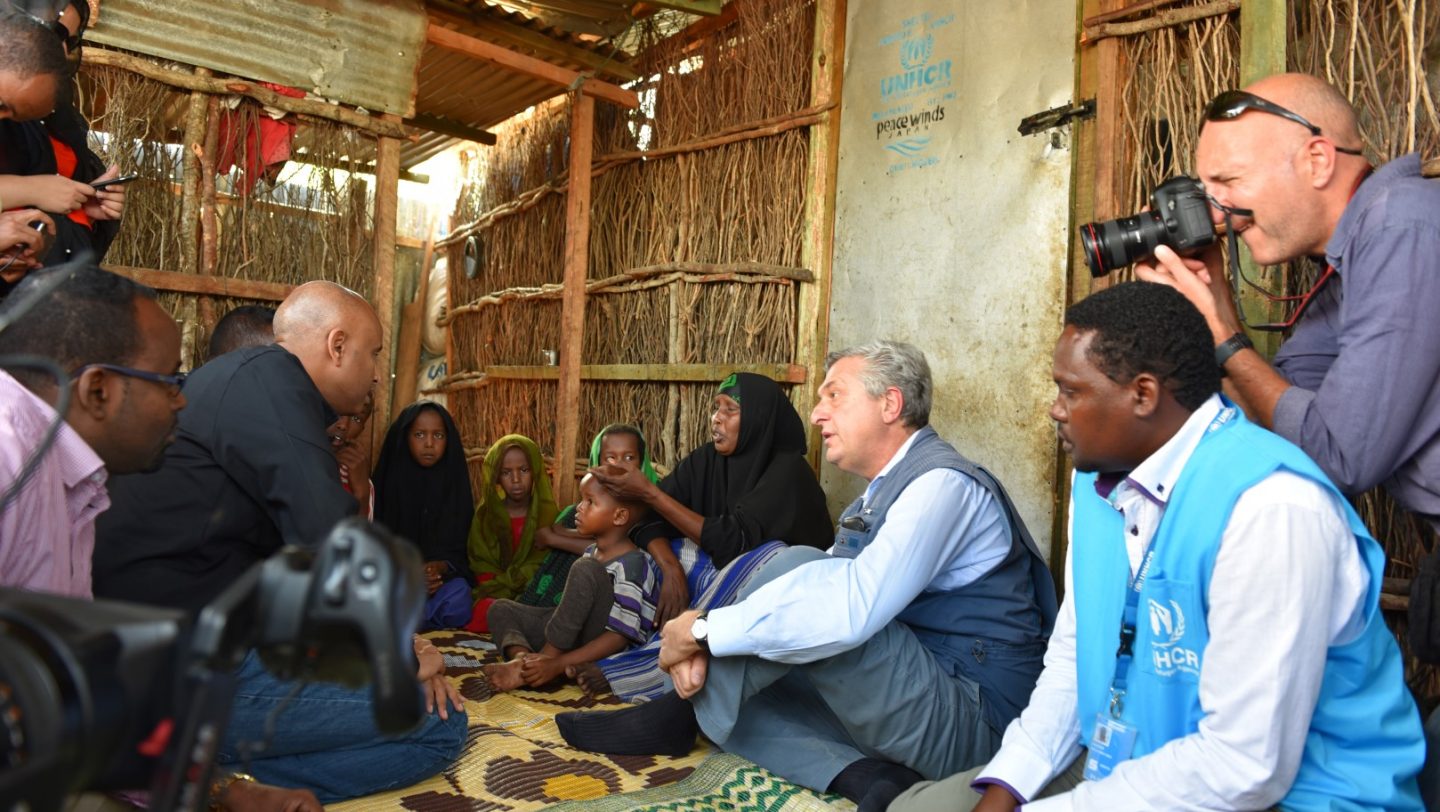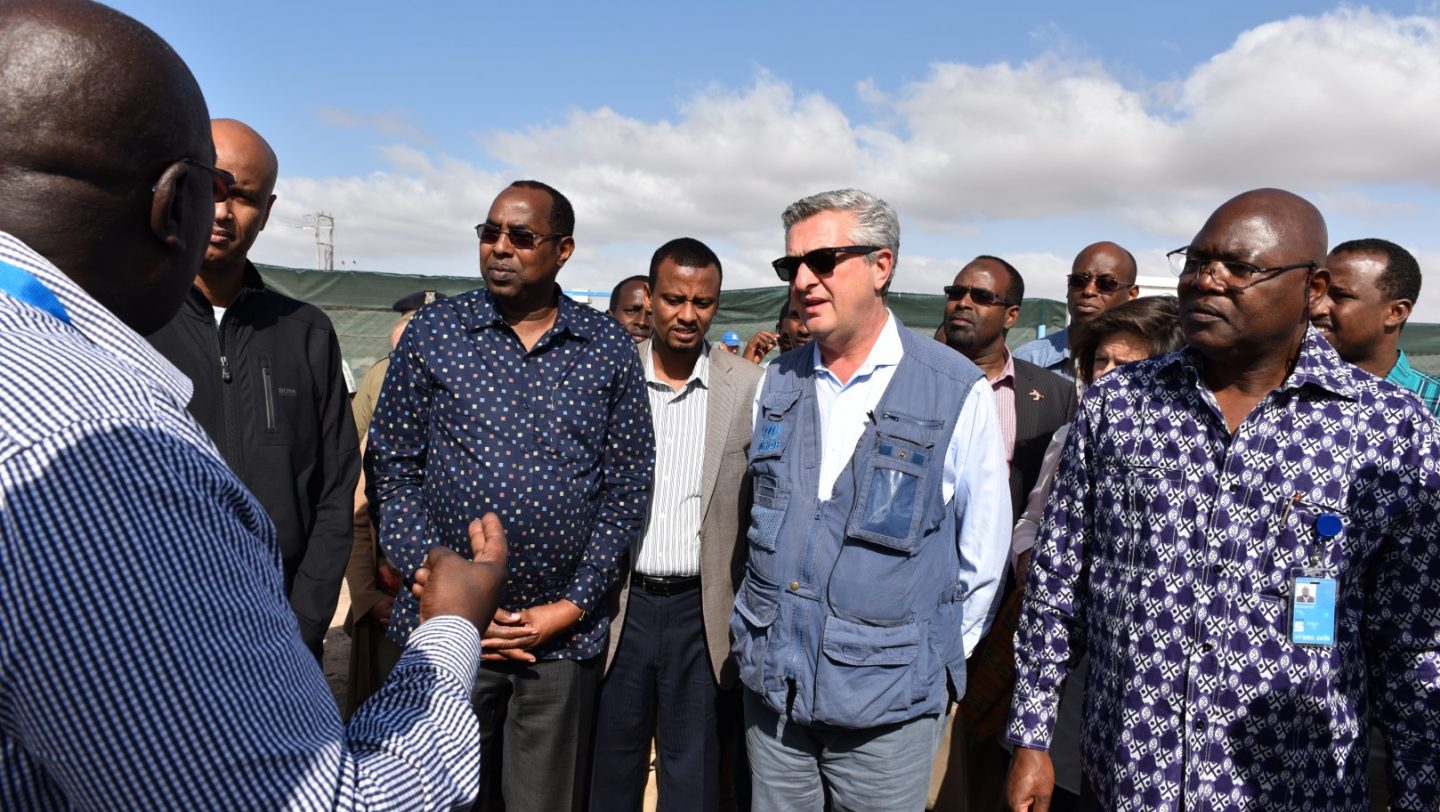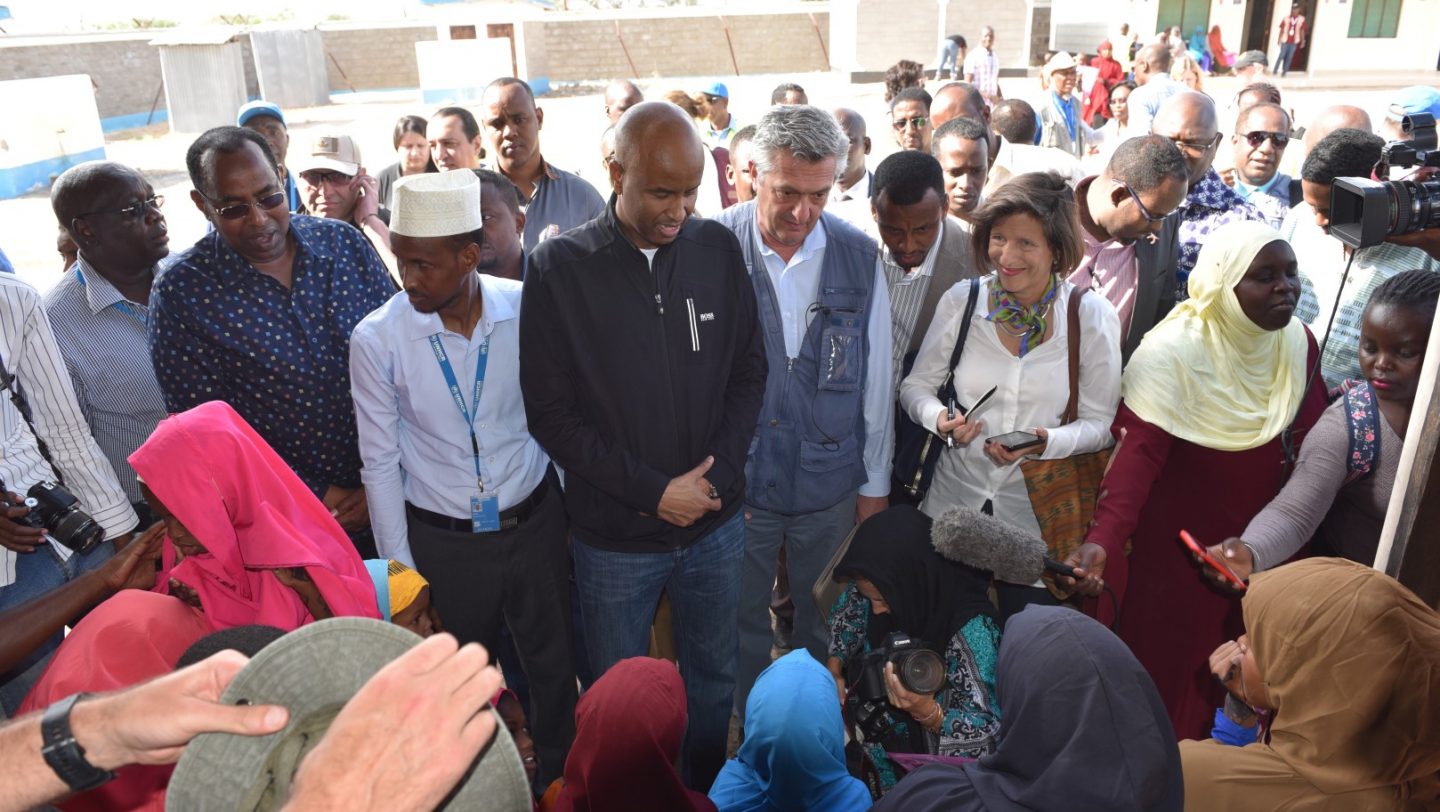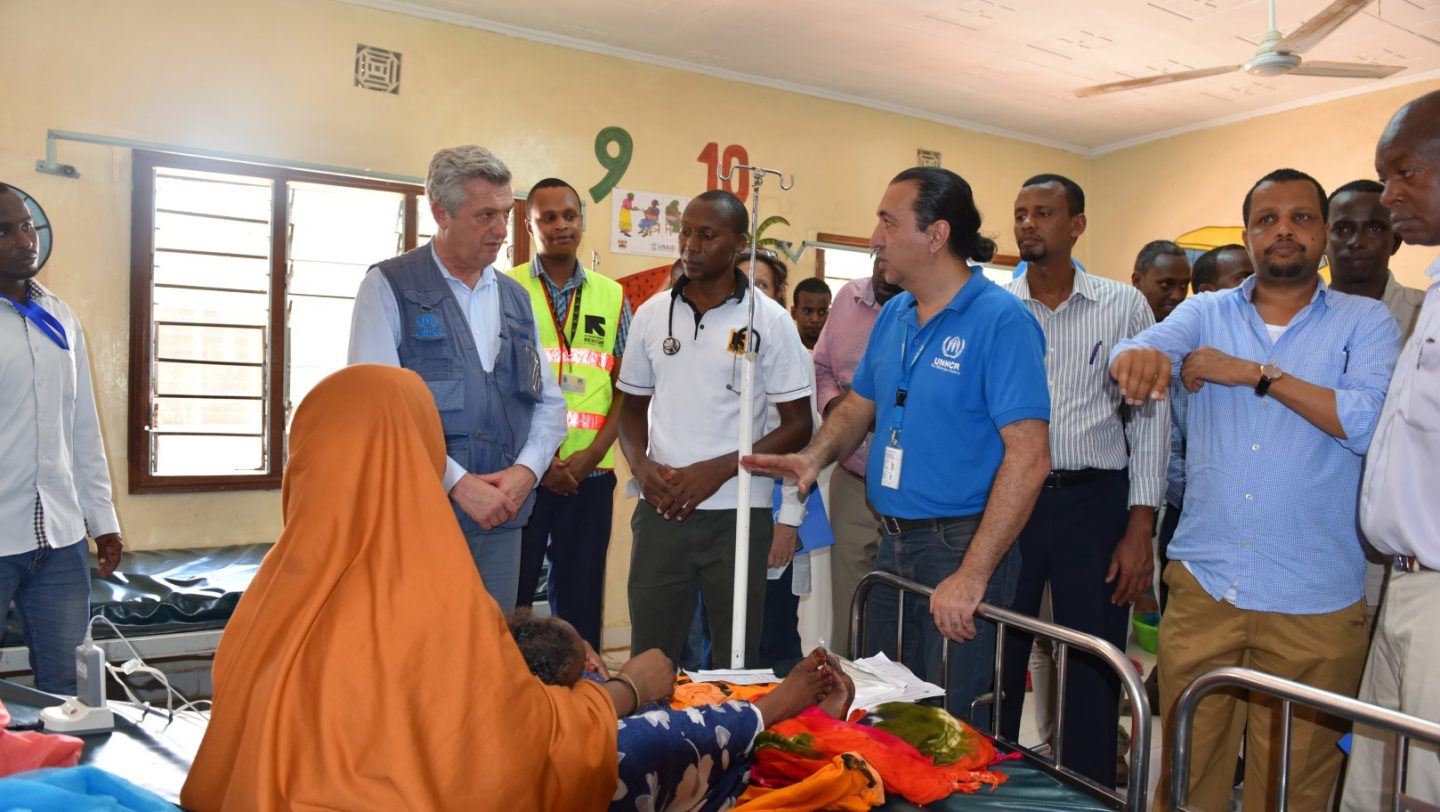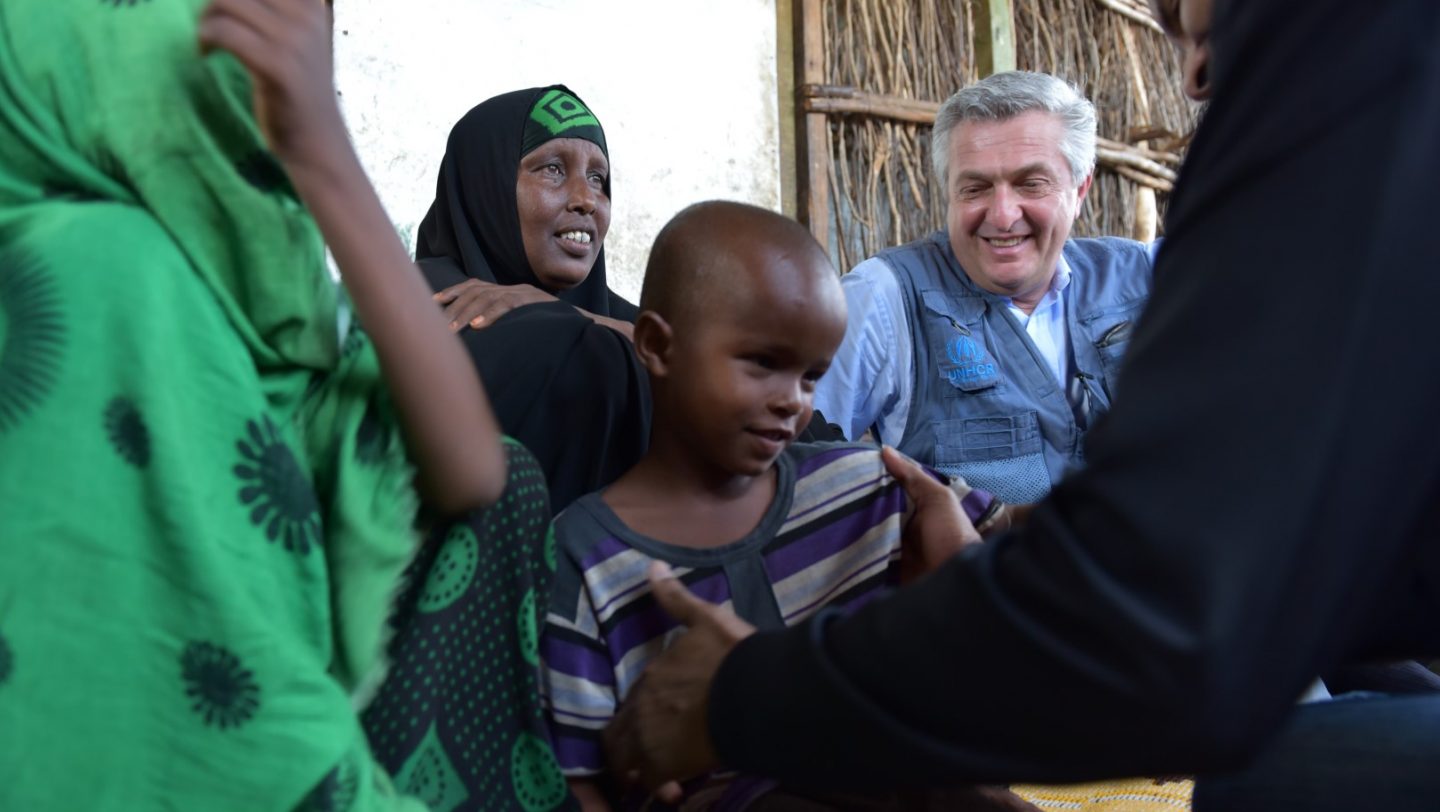UN Refugee Chief in Dadaab Camps, reassures refugees, returnees and host community of UNHCR’s support
“We will continue speaking about Somali refugees.”
During his visit to a Women Center, the UN Refugee Chief reassured beneficiaries on UNHCR’s continues support. © UNHCR/A.Nasrullah
The High Commissioner of the UN Refugee Agency, Filippo Grandi, visited Dadaab Refugee Camp on 19 December 2017 accompanied by H.E. Ahmed Hussen, Minister of Immigration, Refugees and Citizenship of Canada, and officials from UN and the Government of Kenya.
In his tour of the refugee camp, the High Commissioner interacted with refugee families who were traveling home to Somalia under the voluntarily repatriation (VolRep) program.
“We need to extend protection to them when they are in host countries and to help them return home when they choose to do so.”
He also visited refugee families to see their living conditions in the camp and met with refugee community leaders who shared their needs and concerns. The High Commissioner reassured refugee leaders of UNHCR support in international protection, health, education, WASH, food security amidst other support.
Addressing the accompanying media, the refugee chief, Filippo Grandi said, “We will continue speaking about Somali refugees. We need to extend protection to them when they are in host countries and to help them return home when they choose to do so.”
In November 2013, the governments of Kenya and Somalia together with UNHCR signed a Tripartite Agreement on Voluntary Repatriation. Since December 2014, a total of 74,873 refugees have returned from Kenya to Somalia under the voluntary repatriation program. Somali refugees who decide to return home under the voluntary repatriation program receive UNHCR support in Kenya and in Somalia.
In November 2013, the governments of Kenya and Somalia together with UNHCR signed a Tripartite Agreement on Voluntary Repatriation.
The delegation also met with 16 refugee students (6 girls and 10 boys) who have been selected for World University Service of Canada (WUSC) scholarship. Every year, WUSC grants unique scholarships to some refugee students from Dadaab. The selected students move to study in Canadian universities with a resettlement component enabling them to become Canadian citizens.
“I am very keen to promote more education opportunities, and especially vocational training for refugees. UNHCR will also continue to emphasize not only primary but secondary education, and scholarships for those who want to pursue higher education. Education is very critical as it gives knowledge and skills to live productive, fulfilling and independent lives,” the High Commissioner said.
“I am very keen to promote more education opportunities, and especially vocational training for refugees.”
In his message to the host community, the High Commissioner expressed his appreciation to them for hosting refugees for the past 26 years. He reiterated UNHCR’s commitment to continue its support to host communities, with a particular focus on working with development partners for sustainable long-term economic integration interventions in the refugee hosting areas.
The Dadaab refugee complex has a population of 238,794 refugees and asylum seekers and consists of four camps. 96% of the refugees are from Somalia. The first camp was established in 1991, when refugees fleeing the civil war in Somalia started to cross the border into Kenya. A second large influx occurred in 2011, when some 130,000 refugees arrived, fleeing drought and famine in southern Somalia.

